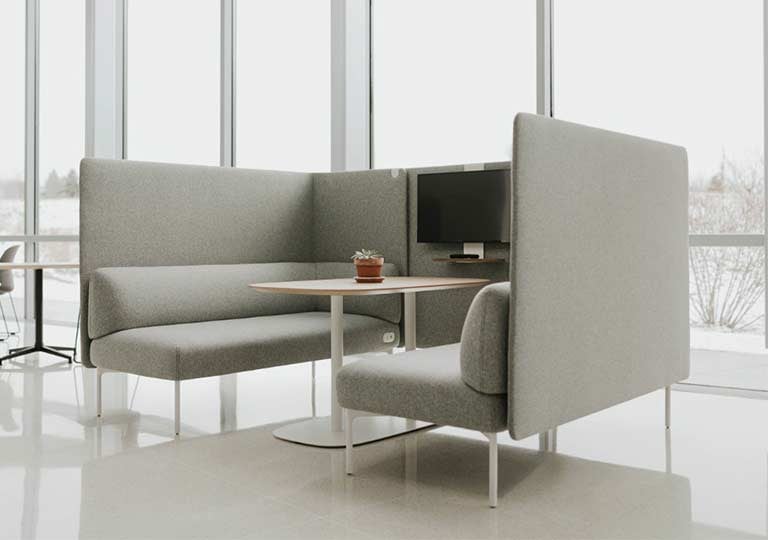In our work, we strive to create value for both businesses and their customers. This is especially true when it comes to healthcare design. One part workplace, one part care center, these spaces should take into consideration the well-being of employees and patients, balancing engaging design with streamlined workflows. After all, the patient journey encompasses not just clinical care, but entails every touchpoint of the experience — before, during and follow-up — and it involves employee interaction every step of the way.
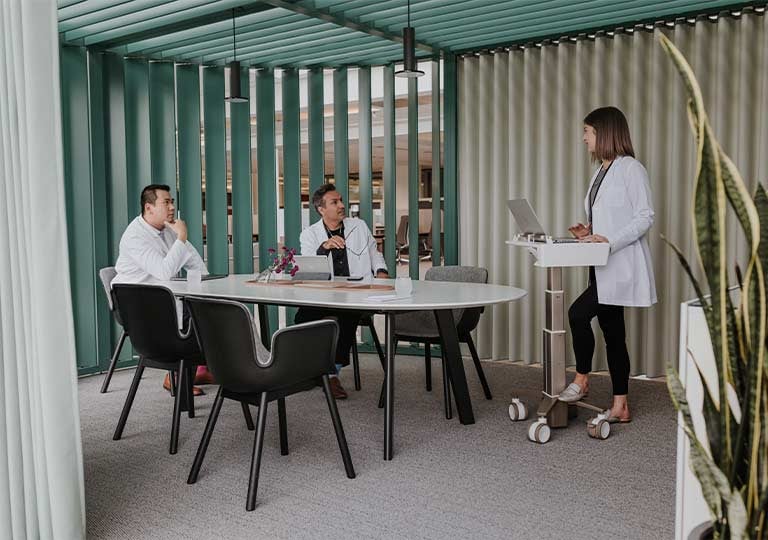
So how can healthcare design support efficient care processes so that the employee experience can be just as rewarding? By taking a holistic people-centered design approach where staff and patient needs are prioritized at every encounter.
Community Spaces
These entail registration, reception, and hospitality spaces like lounges and cafes. Let’s face it, waiting to see the doctor can be stressful. That’s why it’s important to create comfortable social spaces that help reduce stress. When the patient feels less anxious, they are less likely to take out their worries on staff.
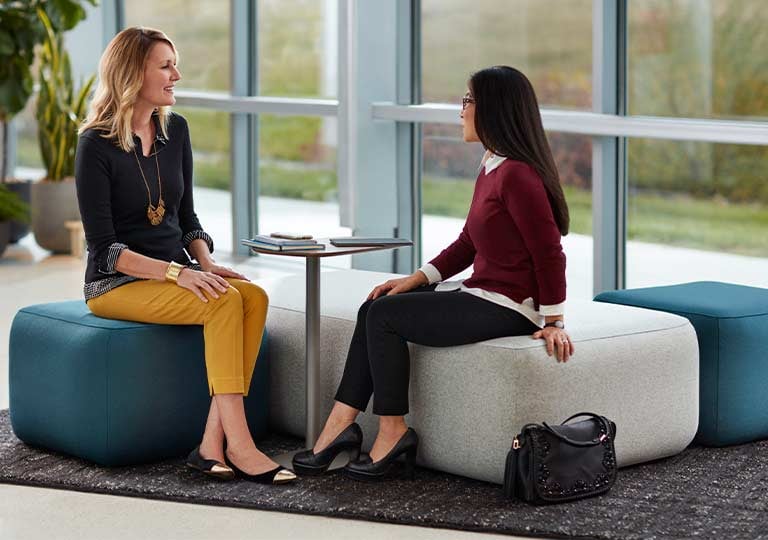
To transform your community space into a calming environment, invest in comfortable seating. Offer a variety of options to meet the needs of a broad range of patients. Cabana-style banquettes and semi-enclosed sofas will provide privacy and an element of style. Tandem seating can accommodate patients and their families while allowing caregivers a place of respite. Having ample tables to place personal belongings can help guests stay organized in these stressful times.
It’s also important to make sure these spaces function optimally — that is, make them as technologically relevant as possible. By embedding smart solutions such as touchless check-in, integrated patient portals, and making pre-registration available from the comforts of home, patients and staff can have a streamlined admittance process.
Patient Spaces
Patient and exam rooms are the cornerstones of healthcare facilities. They not only provide a safe environment for patients, but they are also work environments for providers.
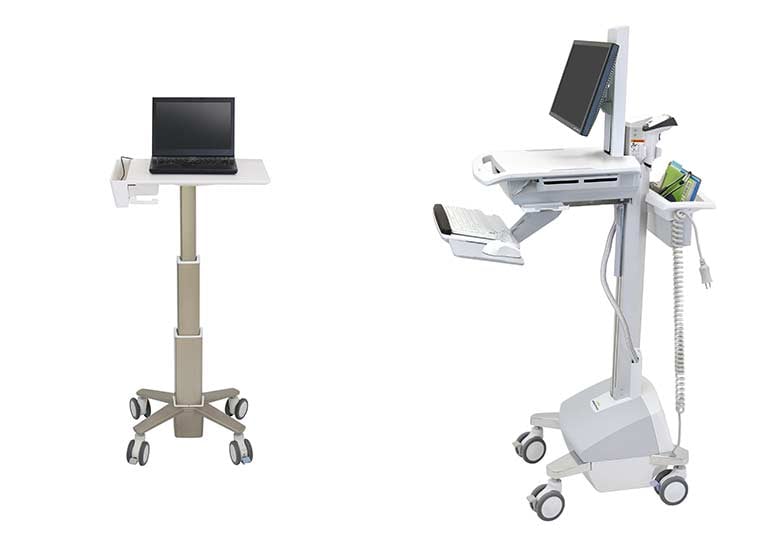
To ensure patients are comfortable throughout their exam, provide ample seating options. Moreover, to enhance the experience between patient and caregiver, design these rooms with appropriate work tools. Moveable medical carts and laptop stands give practitioners a mobile workspace that can support a variety of postures. Their adjustable heights and flexible monitor arms offer comfortable sitting or standing options for multiple users, keeping staff productive and engaged all day long. Plus, their sleek silhouettes keep these rooms feeling spacious, adding a layer of inspiration and dignity to the healthcare experience.
For these spaces, also consider adding biophilic elements to boost workplace productivity and the patient’s state of mind. Integrating natural elements, be it organically shaped furniture, nature-inspired fabric, or wall art with beautiful landscape scenes, can have a positive impact.
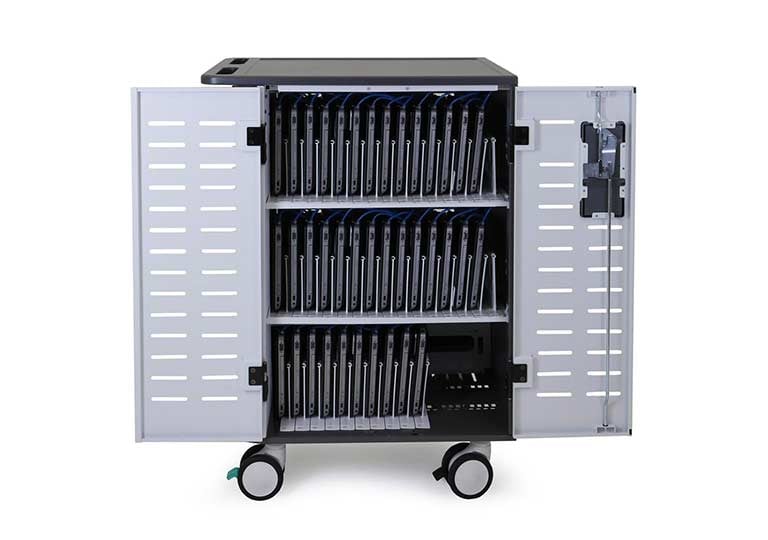
Caregiver Spaces
Healthcare facilities are workplaces. With healthcare workers in short supply and burnout at sky-high rates, it’s critical that these spaces — nurse stations, caregiver areas, and huddle rooms — service the people who use them every day. To ensure healthcare staff can do their best work, outfit these areas with height-adjustable work surfaces and chairs to accommodate individual needs and shift changes, posture preferences, and workflows. Make sure these spaces are Wi-Fi-enabled with ample power outlets and charging stations to keep team members plugged in.
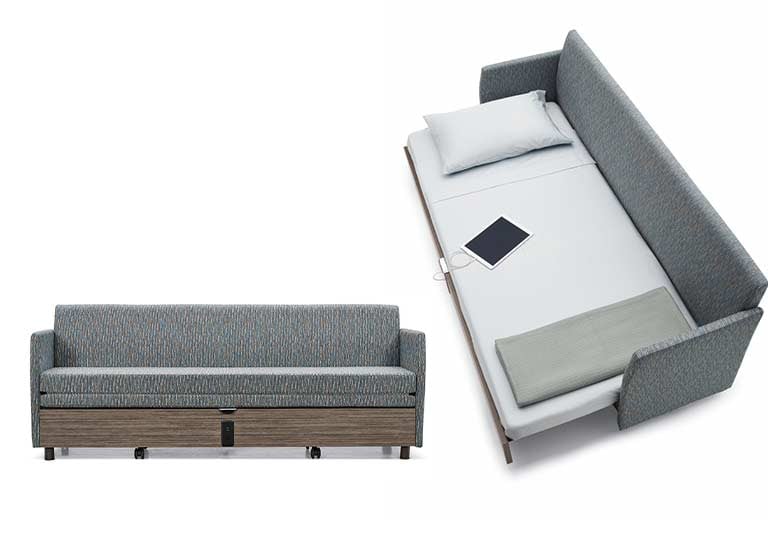
Designing for downtime is equally as important for these workplace environments. With doctors and nurses logging long hours, creating spaces of respite can help rejuvenate their physical and emotional well-being. To maximize space, design these communal areas with multifunctional furniture. Invest in sleeper sofas whose beds can be quickly deployed for a power nap and then folded back up again for team collaboration and socializing. By creating supportive shared workplaces with flexibility embedded, staff can perform optimally, creating a trickle-down effect for the best patient outcome.
When it comes to operational efficiency in healthcare environments, don’t underestimate the power of a well-executed design. Having the right furniture mix can improve workflows while enhancing the healthcare experience for both caregivers and patients.
If you are interested in learning more about creating high-functioning, inspiring places where efficiency, process, and quality care are front and center, contact us.
Contact us to learn more about how we can help you achieve operational excellence through healthcare design.



